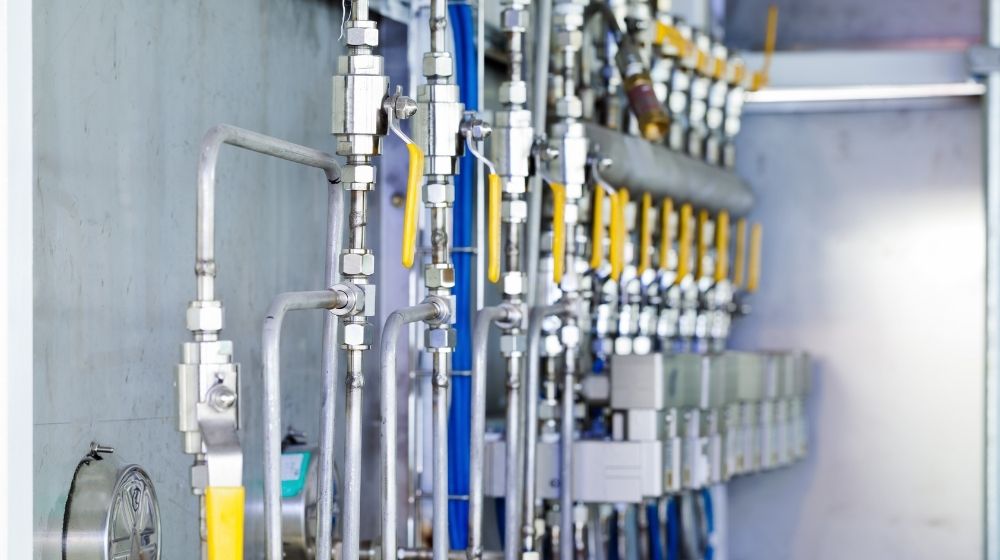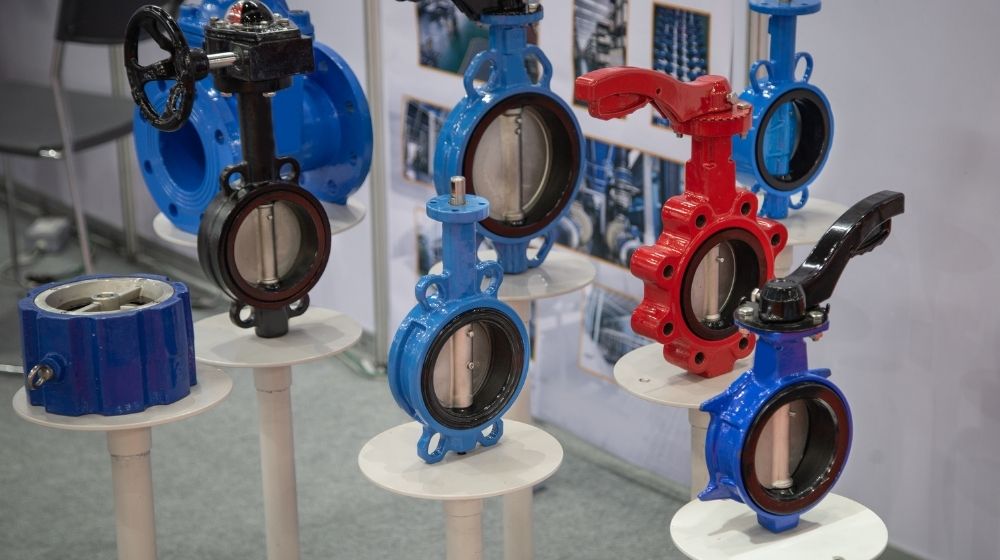

In modern industrial and civil pipelines, the choice of valves is crucial, as it directly affects the operating efficiency and stability of the entire system. As the two most common valve types, ball valves et butterfly valves are often compared by users.
So, what are the differences between a ball valve and a butterfly valve? In the selection process of the two, how to make a choice based on the specific working conditions? This article will give you a comprehensive analysis to help you choose the most suitable valve type.
A ball valve is a valve that controls the flow of fluid by rotating the ball inside the valve body. The interior is composed of a sphere with a hole. When the hole of the sphere is in the same direction as the pipeline, the fluid medium can pass through smoothly; when the ball is rotated 90 degrees, the valve channel is completely closed and the fluid medium cannot pass through, allowing quick opening and closing.
The ball valve structure is divided into floating ball type and fixed ball type.
Floating ball type: It relies on the pressure of the medium to push the ball against the sealing ring to form a seal.
Fixed ball type: This type of ball valve fixes the ball through the upper and lower shafts, which is more suitable for large-diameter or high-pressure systems.
In addition, ball valves are divided into full-diameter type and reduced-diameter type.
Full-diameter type: The channel inside this ball valve is consistent with the diameter of the pipeline, so the medium in the pipeline encounters less resistance when passing through.
Reduced-diameter type: As its name suggests, the internal channel of the reduced-diameter ball valve is inconsistent with the diameter of the pipeline, mainly to save space and cost. With such a structure, the medium in the pipeline will encounter a certain amount of resistance when passing through.

The opening and closing component of the butterfly valve is a disc-shaped butterfly plate, which can open and close the pipeline medium by rotating 90 degrees.
According to the different design structures, butterfly valves can be divided into centerline butterfly valves, double eccentric butterfly valves, and triple eccentric butterfly valves. Among them, triple eccentric butterfly valves have the strongest sealing performance and are suitable for harsh working conditions.
The biggest feature of the butterfly valve is its compact structure, small size, and light weight, which makes it particularly suitable for large-caliber and low-pressure systems. Since the butterfly plate can rotate in the middle of the pipeline to control the opening angle, flow regulation can be achieved to a certain extent.
Although the butterfly valve is slightly inferior to the ball valve in sealing performance, it is easy to install and low in cost, making it an indispensable and important equipment in urban infrastructure.

So, in practical applications, what are the main differences between ball valves and butterfly valves? The following is a detailed comparison of four key dimensions:
Vannes à boisseau sphérique can quickly achieve full opening or full closing by rotating the ball in the valve body. The operation is intuitive and does not require complicated adjustments. It is suitable for systems with low requirements for flow changes.
The butterfly valve can be partially opened or partially closed by adjusting the angle of the butterfly plate. It is suitable for scenarios where a certain control accuracy of the flow in the pipeline is required, such as HVAC systems, water treatment, etc.
In terms of sealing performance, ball valves are usually better than butterfly valves. Its metal and soft sealing structure can achieve zero leakage under high pressure, and is suitable for working conditions requiring tight sealing, such as chemical, oil, and gas.
As for butterfly valves, due to the contact method between the butterfly plate and the sealing ring, the sealing performance of some models is slightly inferior in high-pressure systems or when conveying granular media, but they can still meet the needs of most water treatment and civil systems.
Due to their complex structure, relatively large size, and high cost, ball valves have higher space requirements during installation and require more installation space.
Butterfly valves are widely favored for their lightweight structure and easy installation, especially in large-diameter pipelines. Butterfly valves can not only save space, but also greatly reduce system costs.
Ball valves are suitable for conveying high-temperature, high-pressure, volatile, or corrosive liquids or gaseous media, and are widely used in petrochemical, electric power, papermaking, and other fields.
Butterfly valves are suitable for conventional scenarios such as municipal water supply, air conditioning systems, sewage treatment, and fire protection systems, especially in large-diameter low-pressure systems that require easy operation.
| Robinet à boisseau sphérique | vanne papillon | |
| Scellage | ⭐⭐⭐⭐☆ | ⭐⭐⭐☆ |
| Coût | Higher | Lower |
| Installation Space | Larger | Compact |
| Fluid Control Capabilities | Fully Open/Fully Closed, Average Control Capability | Angle Adjustment, More Precise Control |
| Applicable Media | Gas, Oil, High-Temperature Liquid | Water, Air, Low-Pressure Fluid |
The selection of the appropriate valve type requires a comprehensive judgment based on multiple factors such as actual working conditions, medium type, system requirements, etc.
In summary, ball valves and butterfly valve have their advantages. If you are looking for high sealing and high stability, especially if you need to operate in an industrial high-pressure environment, a ball valve is undoubtedly a more reliable choice. If you are more concerned about easy installation, cost control, and compact structure, the butterfly valve will perform better.
If you are still undecided, please contact us for customized solutions. We can provide professional valve option support and product recommendations based on your working conditions.
